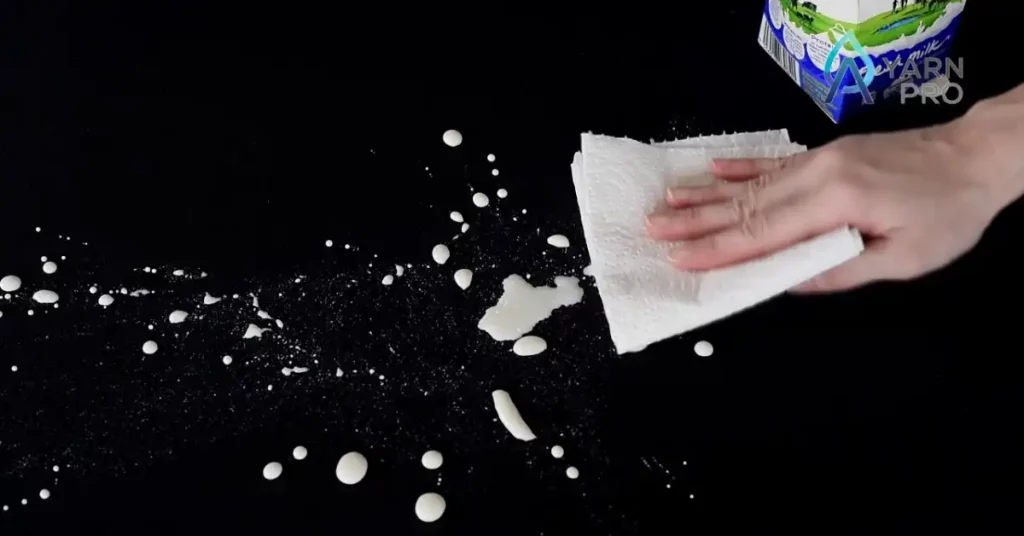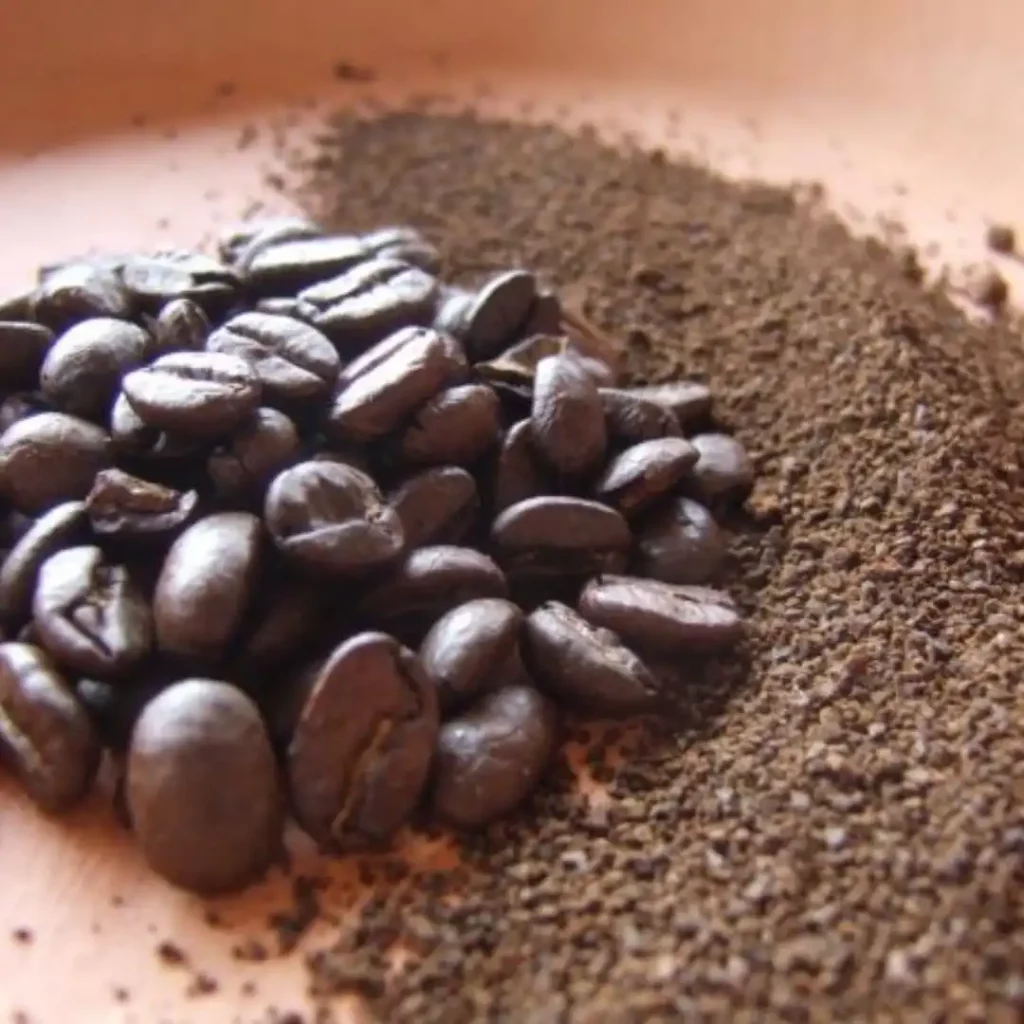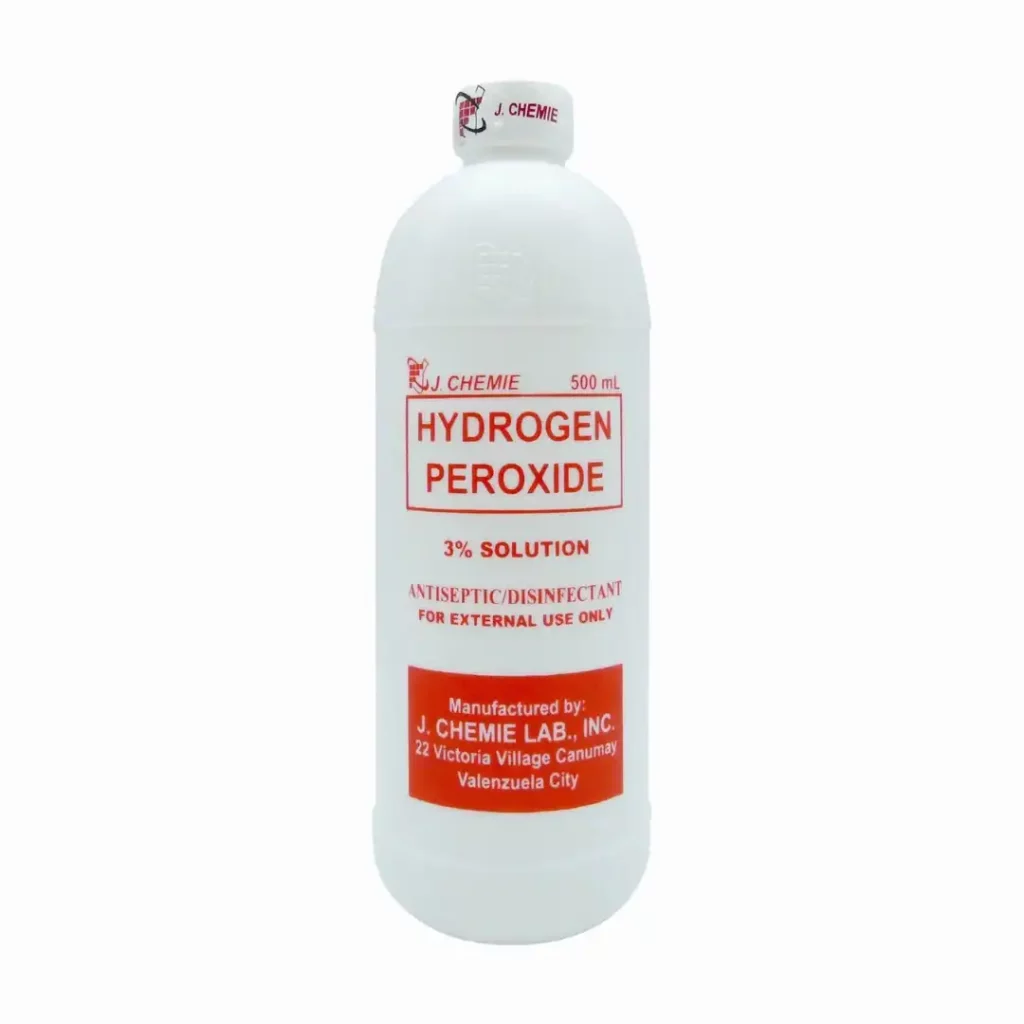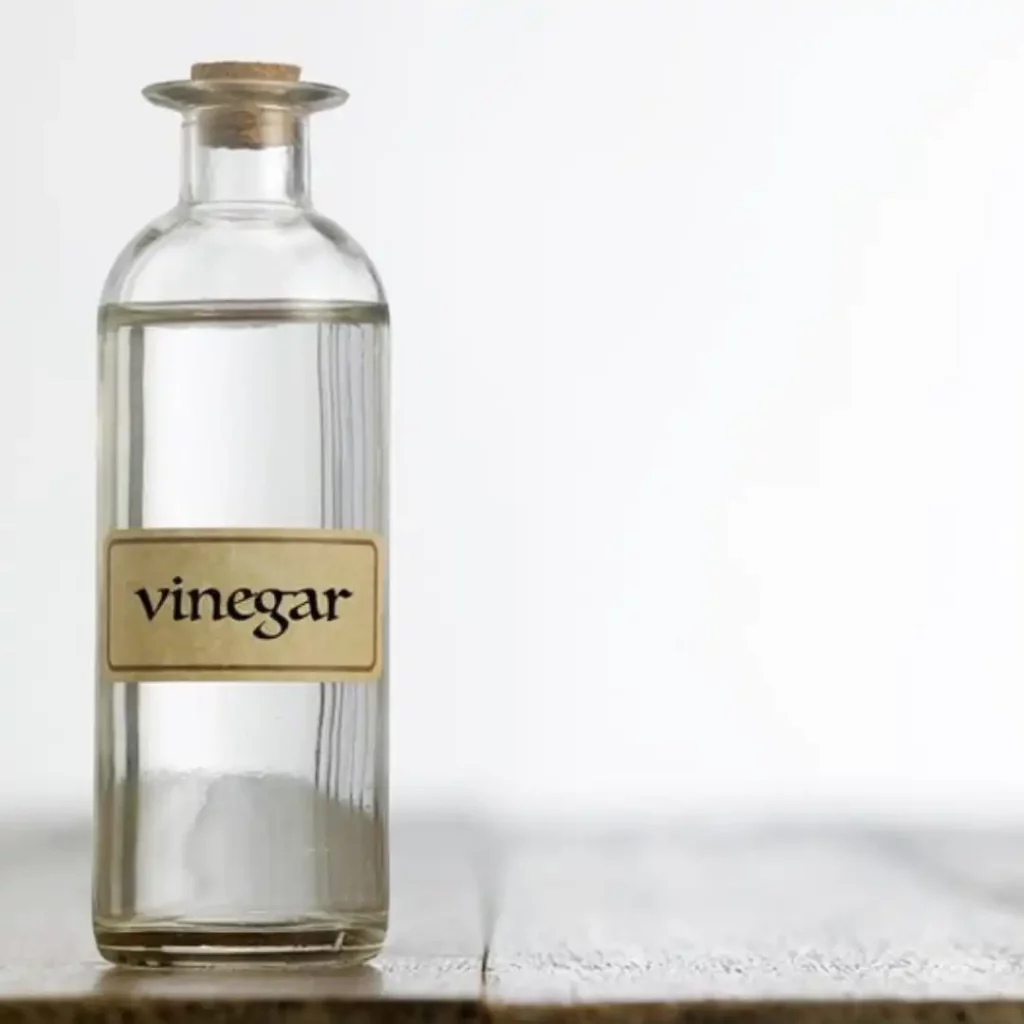Milk or coffee spills are a common occurrence in households with children or pets, and they can leave your couch looking and smelling less than ideal. Not only can milk stains be difficult to remove, but the odor can also be quite unpleasant. Moreover, it’s really hard sometimes to get milk out of a couch once it’s settled. If you’ve found yourself with a milk spill on your couch, don’t worry; there are several methods using common household items and cleaning solutions. With these tips, you’ll be able to tackle the spill quickly and restore your couch to its former state.

Necessary Supplies to Remove Milk Stain from a Sofa:
Removing a milk stain from a sofa requires specific supplies to ensure effective and safe cleaning. These supplies are readily available in most households, and with the right tools, you can remove the stain without causing damage to the sofa’s fabric. Below, we will outline the necessary supplies you need to have on hand to successfully remove milk stains from your sofa.
Water:
It is the primary component of most cleaning solutions and is essential for diluting the milk and removing it from the fabric.
Measuring Cup:
It is essential to measure the correct amount of cleaning solution needed to effectively remove the stain without over-saturating the fabric.

Bowl:
A bowl can be used to create a cleaning solution by mixing various cleaning agents, such as vinegar or baking soda, with water.
Vacuum Cleaner:
A vacuum cleaner can be a useful tool when removing milk stains from a sofa.

Clean Cloths:
Clean cloths can be used to blot up any excess milk immediately after a spill occurs, which can prevent the milk from soaking deeper into the fabric and causing a more significant stain.

Dishwashing Liquid or Hand Soap:
Both of these cleaning agents are designed to break up and remove fats and proteins, which are the main components of milk stains.

Baking Soda:
Baking soda is a great natural cleaning agent that can help remove milk stains from a sofa.

Coffee Grounds:
While coffee grounds can help absorb odors, they are not an effective solution for removing milk stains from a sofa.

Hydrogen Peroxide:
Hydrogen peroxide can be an effective solution for removing milk stains from a sofa, but it’s important to use it properly to avoid damaging the fabric.

Vinegar:
Vinegar is an acidic solution that can help break down the proteins in milk, making it easier to remove the stain.

Enzyme Cleaner:
An enzyme cleaner can be a great option to remove milk stains from a sofa, especially if the stain has set in or is particularly stubborn.

How to Get Milk Out of a Couch?
If you have a spill or a stain from milk on your couch, it’s important to act quickly to prevent the stain from setting in. By following a few simple steps, you can easily remove the milk stain and restore your couch to its previous condition.
Act Quickly:
As soon as you notice the milk spill, grab a clean cloth or paper towel and blot up as much of the liquid as possible. Be sure to avoid rubbing the stain, as this can spread it and make it more difficult to remove.

Mix a Cleaning Solution:
Depending on the severity of the stain, you can choose from different cleaning solutions. Here are a few options:
Baking Soda and Vinegar:
Mix equal parts baking soda and water to make a paste. Apply the paste to the stain and let it sit for 15-20 minutes. Then, spray the area with vinegar and blot the stain with a clean, damp cloth.
Hydrogen Peroxide:
Mix one part hydrogen peroxide with two parts water. Apply the solution to the stain and let it sit for a few minutes. Then, blot the stain with a clean, damp cloth.
Vinegar:
Mix equal parts water and white vinegar in a spray bottle. Spray the solution onto the stain and let it sit for 10-15 minutes. Then, blot the stain with a clean, dry cloth.
Enzyme Cleaner:
Spray an enzyme cleaner directly onto the stain and let it sit for at least 10-15 minutes. Then, gently scrub the stain with a soft-bristled brush or cloth and blot the stain with a clean, dry cloth.
Rinse the Area:
After you’ve treated the stain with your chosen cleaning solution, rinse the area with clean water using a damp cloth.
Dry the Area:
Use a clean, dry cloth or paper towel to blot the area until it’s as dry as possible. Then, allow the area to air dry completely before using the couch again.
Note: It’s always a good idea to test any cleaning solution on an inconspicuous area of the couch first to make sure it doesn’t damage or discolor the fabric.
You can watch this-
How to Get Dried Milk Out of a Couch?
If you have dried milk stains on your couch, don’t worry; you can still remove them. Here are the steps you can follow to get dried milk out of a couch:
Scrape off Any Dried Milk:
Use a plastic scraper or a spoon to gently scrape off any dried milk from the surface of the couch.
Vacuum the Area:
Use a vacuum cleaner with an upholstery attachment to remove any loose particles or debris from the stain.
Mix a Cleaning Solution:
You can use the same cleaning solutions mentioned earlier, such as baking soda and vinegar, hydrogen peroxide, vinegar, or enzyme cleaner. Make a paste or solution, depending on the type of cleaning solution you are using.
Apply the Solution to the Stain:
Apply the cleaning solution directly to the dried milk stain, making sure to saturate the area well.
Let the Solution Sit:
Allow the solution to sit on the stain for at least 10–15 minutes to allow it to penetrate the fabric and break down the stain.
Scrub the Area:
Gently scrub the stain with a soft-bristled brush or cloth to help work the cleaner into the fabric.
Blot the Stain:
Use a clean, damp cloth to blot the stain and remove as much of the cleaner and stain as possible.
Rinse the Area:
Rinse the area with clean water using a damp cloth.
Dry the Area:
Use a clean, dry cloth or paper towel to blot the area until it’s as dry as possible. Then, allow the area to air dry completely before using the couch again.
You can explore this-
Effective Treatments to Get the Milk Stains and Smell Out of a Couch:
Milk spills on a couch can leave behind unsightly stains and unpleasant smells. Whether the milk is fresh or dried, there are several effective treatments you can use to remove the stains and get rid of the smell. Here are some of the most effective treatments to get the milk stains and smell out of a couch:
Baking Soda and Vinegar:
Mix equal parts of baking soda and water to form a paste, apply it to the stain, and let it sit for 10–155–10 minutes. Then, mix equal parts of white vinegar and water in a spray bottle, spray the solution onto the stain, and blot it dry with a clean cloth.
Hydrogen Peroxide:
Mix 1 tablespoon of hydrogen peroxide with 2 tablespoons of warm water and apply the solution to the stain using a clean cloth. Let it sit for 5–10 minutes, then blot it dry with a clean cloth.
Enzyme Cleaner:
Apply a commercial enzyme cleaner to the stain and let it sit for 15–20 minutes. Then, blot the area dry with a clean cloth.
Vinegar:
Mix equal parts of white vinegar and water in a spray bottle and spray the solution onto the stain. Let it sit for 10–15 minutes, then blot it dry with a clean cloth.
Coffee Grounds:
Spread a thin layer of coffee grounds over the affected area of the couch. Let the coffee grounds sit for several hours or overnight to allow them to absorb the odor. Use a vacuum cleaner with an upholstery attachment to remove the coffee grounds from the couch.
Things to Be Remembered While Cleaning Milk Stain from a Couch:
Cleaning milk stains from a couch can be tricky, and there are some important things to keep in mind to ensure that the stain is properly removed without damaging the fabric.
Don’t Ever Scrub the Milk
When cleaning milk stains from a couch, it’s important to avoid scrubbing the affected area. Scrubbing can push the milk deeper into the fabric, making the stain more difficult to remove and potentially causing permanent damage to the upholstery.
Don’t Use Heat on it
When cleaning milk stains from a couch, it’s important to avoid using heat on the affected area. Heat can cause the milk proteins to coagulate and bind with the fibers of the upholstery, making the stain more difficult to remove and potentially causing permanent damage to the fabric.
Call in the Pros if Everything Fails
If you’ve tried all the recommended methods to clean a milk stain from your couch and nothing seems to be working, it may be time to call in the professionals. A professional upholstery cleaner will have the expertise and specialized equipment needed to remove even the toughest milk stains from your couch.
How to Get Milk Out of a Velvet Couch?
Getting milk out of a velvet couch can be a tricky task, but there are a few steps you can take to try and remove the stain.
Blot the Spill Immediately:
Use a clean, dry cloth or paper towel to blot up as much of the milk as possible. Don’t rub the stain, which can push the milk deeper into the fabric.
Velvet couch cleaning
Mix a Cleaning Solution:
Mix a solution of one part white vinegar to two parts water in a spray bottle.
Spray the Stain:
Spray the cleaning solution onto the stain and let it sit for a few minutes.
Blot the Stain Again:
Use a clean, dry cloth to blot the stain again, this time using firm pressure. You may need to repeat this step a few times.
Dry the Couch:
Use a hair dryer or a fan to dry the couch completely.
Conclusion:
Cleaning milk stains from a couch can be a challenging task, but with the right approach, it’s possible to effectively remove the stain and restore your couch to its original condition. Remember to act quickly, as fresh milk spills are easier to clean than dried ones, and avoid scrubbing or using heat on the affected area.
FAQ:
What’s the best way to get milk out of a couch?
The best way to get milk out of a couch depends on the type of milk and the material of the couch. Generally, acting quickly, blotting the spill, and using a cleaning solution designed to break down the milk proteins are effective methods.
Will spilled milk smell go away?
The smell of spilled milk can be quite persistent and difficult to remove, especially if the milk has seeped deep into the couch.
Is it possible to remove milk stains from a leather couch?
Yes, it is possible to remove milk stains from a leather couch, but it requires special care and attention to avoid damaging the leather.
Can I use a steam cleaner to remove milk stains from my couch?
It is generally not recommended to use a steam cleaner to remove milk stains from a couch.
Will a professional cleaning service be able to remove milk stains from my couch?
In most cases, a professional cleaning service should be able to remove milk stains from your couch. Professional cleaners have access to specialized equipment and cleaning solutions that can effectively break down and remove milk stains from a variety of fabrics and materials.
How quickly do I need to clean up a milk spill on my couch to prevent stains?
It’s best to clean up a milk spill on your couch as soon as possible to prevent stains from setting in. Milk contains proteins that can bond with the fibers of upholstery, making it difficult to remove the stain once it has dried or set in.



